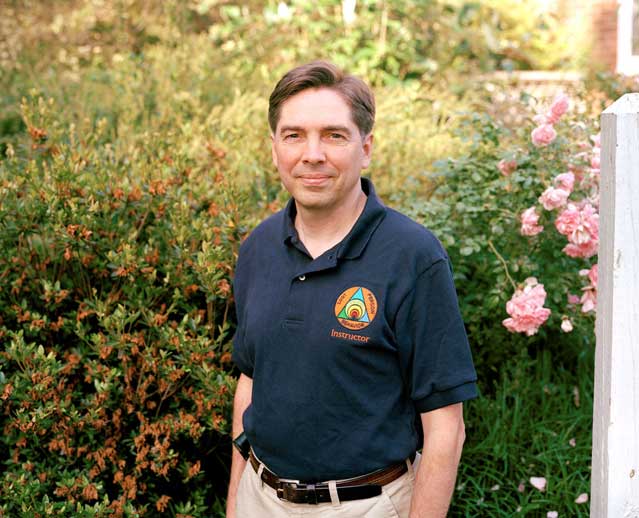, known affectionately as Professor Rescue, has been deeply involved in the search and rescue community since 1981. His 2008 handbook, is one of the most influential field manuals used by today’s SAR professionals. Based on his work crunching numbers from his international incident database, the book includes Koester’s 40 different subject profiles, providing searchers with behavioral models that help predict the best areas on a map to focus a rescue. In the early 2000s, after participating and hearing about several cases involving autistic children, Koester began working on a profile for this rapidly expanding population. He started presenting on the topic in 2004, and has seen the number of incidents involving autistic children increase ever since. In the early stages of the 2011 search in Virginia for eight-year-old Robert Wood Jr., the largest manhunt in state history, Koester’s advice gave searchers the blueprint that guided the five-day ordeal.
The Search for Robert Wood Jr.
In photos.Catch Me If You Can
Missing autistic child spawns Virginia’s largest manhunt.Why are we seeing such an increase in searches involving autistic children?
Well, first off, the prevalence rate of kids diagnosed with autism has been increasing. When I first started putting together a presentation in the phenomenon in 2004, it was one out of 178 children. Last year it was one out of 110. . What’s causing the prevalence rate to go up, no one is exactly sure. Certainly there’s been more sensitivity in making the diagnosis. More parents have been willing to bring their children in for a diagnosis. Regardless, just by that increase alone you’d expect to see more cases of autistic children involved in searches. We did a study with my database just based on the number of kids in total, how many kids with autism would I expect to see just by random chance. Essentially what I found that children with autism are four or five times more likely to be involved with a search than children without any of these issues.
What are the behaviors that make autistic children more likely candidates?
Two major traits. First, there’s a subset known as “runners.” When they get upset or stressed, particularly in group situations, they want to be by themselves, so they bolt. These kids are often literally running. The second thing is that with autism kids, there is no real sense of danger, so they’ll go right into swift water or any kind of water. That’s where most of the fatalities show up in search and rescue situations. Half of those autistic children who have died before they could be found, the cause was drowning. With more typical profiles, cause of death is usually hypothermia when it’s cold and dehydration when it’s hot out.
They’re also attracted to things that others might not be.
Right. Lights, water, and reflection are three things known to attract autistic kids. You could also add heavy machinery. Planes, trains, firetrucks. And unfortunately, the other thing you frequently see as cause of death in autistic cases is that they get struck by traffic.
For an autistic child who is lost, how might they experience the situation differently than you or me?
It’s very difficult to get in the mind of someone, but we do know that anybody that experiences getting lost—regardless of whether or not they’re autistic—is going to have an adrenaline rush, but not in the good way. They’re going to be fearful. They’re going to be anxious. They’re going to breathing fast. Shaking. They may feel nauseous. All the typical sensations of anxiety. A child without autism will eventually get their emotions under control by using their rational brain. Someone with autism may have more difficulties getting control of those emotions. They also might not feel any pain, which could keep them out there. And the most problematic thing is they tend to be evasive and non-responsive. The worst thing in the world, from a search-and-rescue professional’s perspective is a mobile, non-responsive subject.
You can’t call their name and get them to answer back.
Yes. In fact, there’s a chance that by calling out their name you just may give them more of a chance or motivation to hide.
Some of your most influential work in this field has been to create models of behavior that help guide SAR professionals at the start of a search. You’ve also said that, “If you’ve met one autistic child, you’ve met one autistic child,” meaning you can’t really make any assumptions. Do models even apply when searching for autistic kids?
Well, I like to point out that I have and 41 different models. There is no one thing that fits every situation. You really have to look at the traits of the individual. It’s the combination of model and the individual behavior of a person that should be driving your plan. But once you hear the word “autistic,” you at least know the type of questions you need to ask. You can’t make assumptions, but you know how to proceed. Those questions, which you ask family members and people who know the subjects best, are very different from the questions you’d ask about a typical missing hiker.
So let’s take the case of Robert Wood Jr. What questions needed to be asked once he went missing?
What types of things is he attracted to? What types of things is he afraid of? How will he respond to searchers, dogs, helicopters—all our search tools? What is his communication ability? What’s likely to cause a catastrophic reaction? If we find him, what tools or techniques might be used to de-escalate a bad interaction? The answers to these questions give us a place to start.
And from there, you use the behavioral models. What do those advise specifically for autistic kids?
Thoroughly check out structures. They have a tendency to hide in outbuildings, sheds, cars, small thick places that are hard to see and discover them. There’s a good chance they might be attracted to water. Search all the water features. I say, “Search the blue lines.” And search any other source of attraction. There’s still enough instinctual tendency in autistic children that if they find a road or a trail or a drainage, they’ll follow it, so that’s standard advice that applies to search for anybody. If there aren’t any structures in the woods, I’ve seen where an autistic child will go into a sort of pseudo structure. They’ll climb into the thickest, nastiest rhodedendron to feel enclosed and safe.
Among SAR professionals and groups, how widespread is the knowledge base regarding searches involving autistic kids?
It’s hard to say. One county may be different than the next county. One state may be more informed than the next. There isn’t a consistent level of information delivery. But it does tend to be a topic at a lot of the SAR conferences these days. And our knowledge is evolving. I certainly hope that more research and cases will give us more data and approaches.
In Robert’s case, there were hundreds of volunteers. How do you get the message out to so many inexperienced searchers who might have no idea how to approach an autistic child? Fortunately, a mass briefing is fairly typical. You can get most of that information across very early on. From there, individual team leaders ought to be briefing smaller teams on traits to take into consideration. For Robert, I was just there the first night. He was a runner. And nonverbal. That increased the chance of him being evasive. You can’t assume that if you’ve checked an area two or three times, the probabilities are such that its diminishing returns each time you go back, so you don’t have to search there anymore. Your probabilities are a clean slate every day. And it’s frustrating. ��
He was eventually found in a spot that had already been searched numerous times. And he was out there for five days. Were you surprised that he was found alive?
What you find is that if you’ve been in this field long enough, you’re not surprised about anything. In my opinion, the general public gives up on people sooner than they should. In today’s society, we’ve equated being uncomfortable with being dead. There’s a big difference between the two. In Robert’s case, the temperatures during the day weren’t too hot. The humidity of Virginia makes dehydration pretty rare. I’m assuming he found some kind of water. And it wasn’t too cold at night, avoiding hypothermia range. There was plenty of reason to believe he could make it.


